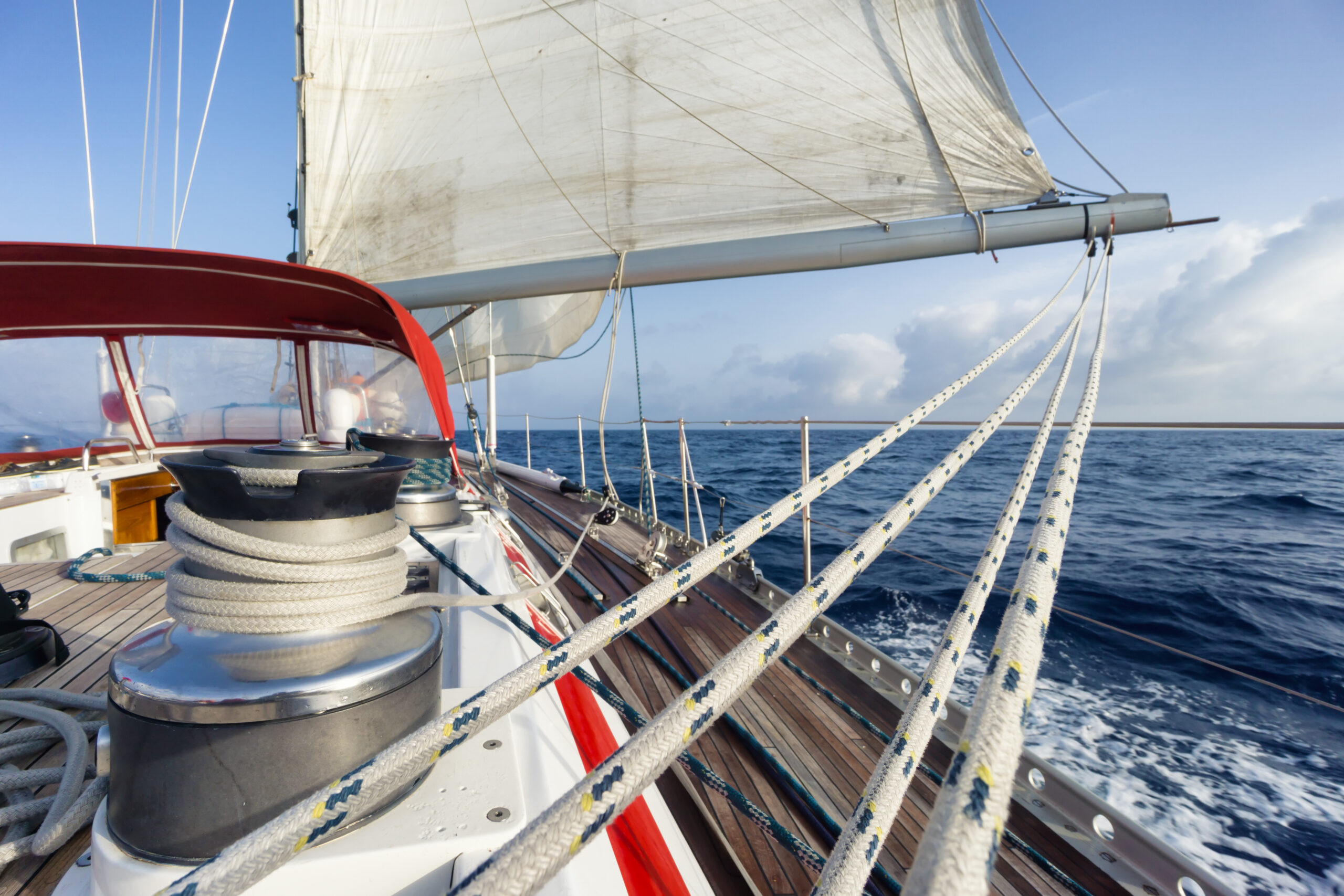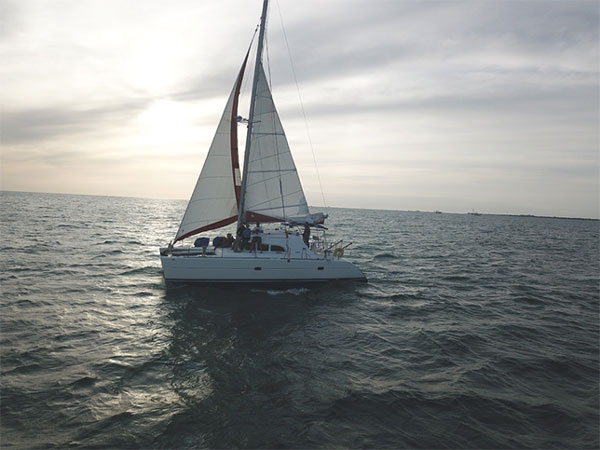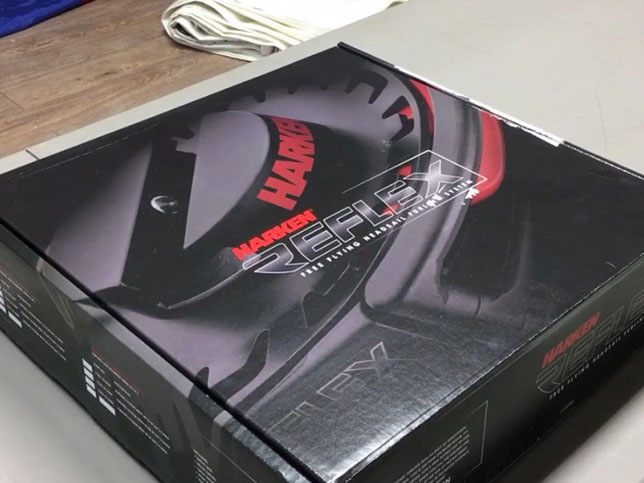For many cruising sailors, the next project often focuses on the more immediate needs of boat maintenance – the reliable hum of the engine, the integrity of seacocks, a fresh coat of bottom paint. While many of those seasonal projects must be prioritized, sails, while essential, can sometimes be overlooked. Mainly due to their deterioration being gradual. It’s easy to get accustomed to a slow decline in performance without realizing just how much of your sail shape has been lost. If you’ve been sailing with the same sails for many years, or if you’ve recently purchased a pre-owned boat, it’s crucial to understand when your sails are “bagged out” and impacting your cruising experience.
Unlike a sudden engine failure or a leaky fitting, the signs of worn-out sails creep up on you. Constant exposure to the wind stretches the fabric, distorting the carefully designed airfoil shape. Exposure to ultraviolet rays during use or storage also helps speed up this process by breaking down the finish applied to the cloth that keeps the fibers intact. This is often referred to as being “bagged out,” and it leads to a noticeable decrease in your boat’s performance. It can also decrease your comfort and safety, as it introduces increasing weather helm and causes your boat to heel more.
So, how do you know when it’s time to consider replacing your sails?
Clues Your Sails Are Losing Their Performance:
- Increased Fullness/Belly: One of the most obvious signs is an excessively deep curve or “belly” in the sail, even when it’s properly trimmed for moderate conditions. The designed shape of a cruising sail is a delicate balance, and overstretching creates a draft that is too deep and inefficient.
- Draft Position Moving Aft: The “draft” is the deepest part of the curve in your sail. In a new or well-maintained sail, this draft is typically located forward of the mid-point. As the sail stretches, the draft tends to move further aft. This makes it difficult to point upwind effectively and reduces overall efficiency.
- Distortion Along Seams or Panels: Examine the seams and individual panels of your sails. If you notice significant distortion, puckering, or unevenness, it indicates that the fabric has stretched unevenly. Large deep wrinkles that don’t go away after trimming your sail are a key indicator of high-load areas.
- Loss of Crispness: Feel the fabric of your sails. New sails have a certain crispness and rigidity that breaks in with some use, but they tend to keep the ‘dacron’ feel of the cloth. As they age and the fibers break down, they will feel softer, more pliable, and less able to hold their intended shape under load.
- Chafe and Wear: Inspect high-stress areas, such as where the sail rubs against spreaders, shrouds, life-lines, or the boom. Look for signs of chafe, tears, or worn stitching.
- UV Damage: Prolonged exposure to the sun’s ultraviolet (UV) rays weakens the sailcloth fibers. This can manifest as discoloration (often a yellowish or brownish tint), increased stiffness in some areas, and an overall reduction in the fabric’s strength, making it more susceptible to tears. You can read about the fingernail test here to test your stitching.
The Feel of Fatigue: Performance Indicators:
- Difficulty Pointing Upwind: If you find your boat struggling to sail at a good angle to the wind, or if you’re consistently being headed by other boats that appear to be pointing higher, your sails may be losing their ability to generate lift efficiently.
- Excessive Heeling: Bagged-out sails often cause the boat to heel more in moderate winds without a corresponding increase in speed. This is because the distorted shape creates more drag and less forward thrust.
- Inability to Trim Effectively: You might find yourself constantly adjusting the sheets and other control lines without achieving the desired sail shape or performance. The stretched fabric simply won’t respond as it should.
- Feeling Underpowered: If it feels like you always need more wind to get the boat moving at a comfortable cruising speed, your sails may not be capturing the wind’s energy efficiently.
- Slower Acceleration: A telltale sign of tired sails is sluggish acceleration when the wind picks up or after a tack or gybe. The stretched shape doesn’t provide the same initial power.
- Difficulty Depowering: Worn-out sails can be harder to depower in heavier air. The stretched fabric can become fuller and less controllable, making the boat less comfortable and potentially less safe.
- Harder Steering: An inefficient sail shape can negatively impact the boat’s balance, making it harder to steer a consistent course.
- Control Lines at Their Limit: Are you constantly maxing out your outhaul, cunningham, or boom vang just to try and achieve a decent sail shape? This is a strong indication that the sail itself has stretched beyond its optimal form.
Why Replacing “Good Enough” Might Be Better for Your Cruising:
While it might be tempting to “make do” with older sails, especially when other boat projects seem more pressing, investing in new, properly shaped sails designed specifically for your cruising needs can significantly enhance your sailing experience. Every sail from Precision Sails is custom-designed in a one-on-one collaboration between you and our experienced sail designers. This ensures that your new cloth is perfectly tailored to your boat, your typical sailing conditions, and your cruising goals. Properly shaped sails will:
- Improve Performance: Experience better speed, pointing ability, and overall efficiency, allowing you to reach your destinations more comfortably and potentially reduce engine hours.
- Enhance Comfort: A well-balanced sail plan reduces excessive heeling and makes the boat more stable and predictable in various wind conditions.
- Increase Safety: Sails that can be effectively trimmed and depowered contribute to better boat control, especially in challenging weather.
Repair vs. Replace: Knowing When to Draw the Line:
Minor tears, chafe, or stitching issues can often be repaired, extending the life of your sails. However, if your sails are exhibiting multiple signs of significant stretch or if the cost of repairs starts to approach the cost of replacement, it’s likely time to consider new sails.
You can request a quote simply for awareness of the cost of new sails by clicking here and choosing the “interested in pricing” option in our dropdown.
What About Used Sails?
Used sails can be a great option for sailors needing to replace a sail quickly. A sail that is already built will be faster to receive than any newly made sail from any loft. The downside of going with a used sail can be:
- Price: Used sails are often priced fairly close to the price of new sails.
- Fit: Unless you are very lucky you are more likely to find a sail that is too short on the foot/luff or too long and needs to be cut back.
- Sail Shape: If the sail was not designed for your boat and weather conditions it may not be optimized for your vessel. A sail that was too long and recut to fit will suffer some shape loss as the aerofoil is modified beyond what it was set to do.
- Hardware: Sliders and bolt rope may need to be replaced to properly attach to your rig. Make sure you take any labor costs into account for modifications or repairs to make a used sail work on your boat.
Ready for a Sail that Truly Performs? Talk to a Sail Consultant.
Don’t let tired, bagged-out sails diminish your cruising ability. Being aware of the signs of wear is the first step towards catching an issue before it becomes a problem. At Precision Sails we specialize in crafting high-quality, custom cruising sails that are designed to deliver optimal performance and durability for years to come.
Connect with one of our experienced sail consultants for a personalized consultation. We’ll help you evaluate your current sails, understand your sailing style and goals, and walk you through how a new, custom-designed sail can elevate your time on the water.
- Call us at 1-888-958-5638
- Email us at info@precisionsailloft.com
- Request a quote






